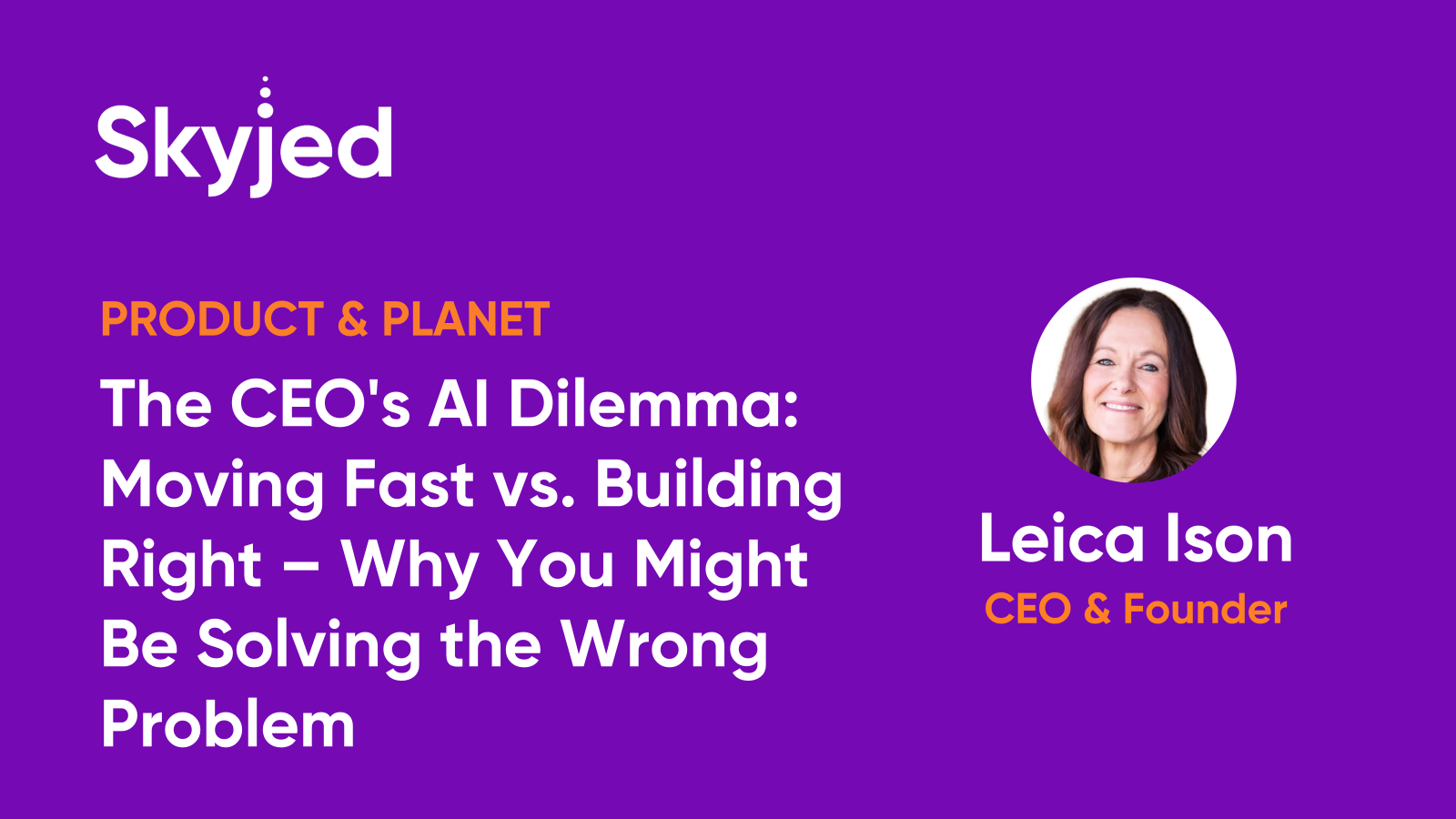The CEO's AI Dilemma: Moving Fast vs. Building Right – Why You Might Be Solving the Wrong Problem
by Leica Ison

Over coffee last week, a with a fellow CEO we talked about: "We've got three Ai initiatives running, but I'm starting to wonder if we're just experimenting and checking boxes rather than creating value." I've heard variations of this concern from dozens of executives in recent months, and it points to a fundamental misunderstanding about what makes Ai successful in the enterprise.
The prevailing wisdom seems to be that CEOs face a tough choice: move quickly with your Ai experimentation and accept some risks, or build methodically with proper lifecycle design and governance and fall behind.
As someone who's been in the trenches of Ai implementation for years founding Skyjed, I'm here to tell you this is a false dilemma. Not only can you move fast and build right, but proper lifecycle governance is actually the accelerant your Ai and innovation strategy needs.
The Speed Trap
Many leadership teams walk the "move fast and break things" ethos when it comes to Ai. There's a palpable fear of being left behind, of competitors gaining an edge while you're still planning. I get it – no one wants to be Blockbuster in a Netflix world.
But here's what I'm seeing play out repeatedly: Companies rush to deploy Ai capabilities without lifecycle management and governance frameworks, only to find themselves burning resources on rework, compliance remediation, and explaining to the Board why that splashy Ai investment isn't delivering as as promised.
One global financial services firm provides some good learnings as they spent $15M on an AI-powered customer service solution for their core product, only to have it needing significant re-work only six months after deployment when they couldn't explain how decisions were being made and measure alignment to key safeguards.
The rush to implement created an expensive lesson in the value of lifecycle governance.
The Real Accelerant - "Scale with Guardrails"
What if I told you the companies realising tangible returns from AI aren't the ones with the most advanced models or biggest investments, but those with the most mature lifecycle management and governance practices?
This isn't just my observation. others like McKinsey research shows organisations with robust AI governance are more likely to see significant financial benefits from AI than those without such frameworks.
The reason is straightforward: governance creates confidence, and confidence speeds decision-making.
When your team knows exactly how an AI solution will be monitored, maintained, and measured over its lifecycle, they move more decisively.
When your Board understands how risks are being managed and each lifecycle phase, they approve larger investments.
When your customers trust your AI statements & systems, adoption accelerates.
Reframing the Challenge
So what's the real challenge CEOs should be solving? It's not "how do we implement AI faster?" but rather "how do we build a foundation that allows us to scale AI confidently?"
This means investing in:
1. Lifecycle management processes that track AI deployments from conception, experimentation through retirement
2. Lifecycle Governance frameworks that ensure the guardrails for alignment with corporate values and regulatory requirements
3. Monitoring systems that provide visibility into how AI systems are performing and evolving
4. Transparency protocols and safeguards with a responsible scaling statement and Executive Lifecycle dashboards that enable explanation of AI decisions when needed.
These aren't bureaucratic hurdles to slow you down – they're the infrastructure that lets you move faster over time.
The Path Forward
If you recognise your organisation in this dilemma, here are three immediate steps to consider:
First, assess your current lifecycle management and governance maturity honestly. Most organisations overestimate their capabilities here.
Second, invest in a Lifecycle Management and Governance toolkit at the same commitment level you're investing in AI capabilities themselves. They're two sides of the same coin.
Finally, position lifecycle management and governance as an enabler, not a constraint, within your organisation. The messaging matters.
The companies that will dominate their industries through AI won't necessarily be those that deployed first, but those that built sustainable practices that allow them to deploy confidently, repeatedly, and at scale. The real competitive advantage isn't in being first to implement AI – it's in being the first to get the full value from it.
And that's impossible without proper lifecycle management and governance. As the founder of Skyjed, an AI-driven lifecycle and governance platform, I'm passionate about helping organisations realise sustainable value from their AI and innovation investments.
This is the latest in my series exploring the imperative of AI for CEOs. I welcome your thoughts and experiences in the comments below.
Cheers and until next edition
Leica
Contact Skyjed today for a personalised demonstration.
About Skyjed
Watch our 30 second Skyjed Overview video here
Skyjed’s AI-powered end-to-end lifecycle and governance platform is mission control for lifecycle management and governance. Bringing together every data point across your portfolio and lifecycle into a single source of truth, it gives our clients a new perspective to make more strategic lifecycle decisions to launch, monitor, optimise, and win.
Our industry-leading platform has received numerous awards and recognition from clients and industry bodies, demonstrating our commitment to innovation and excellence.




